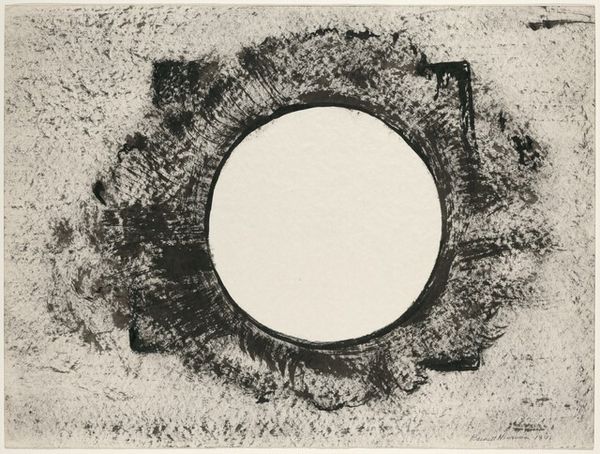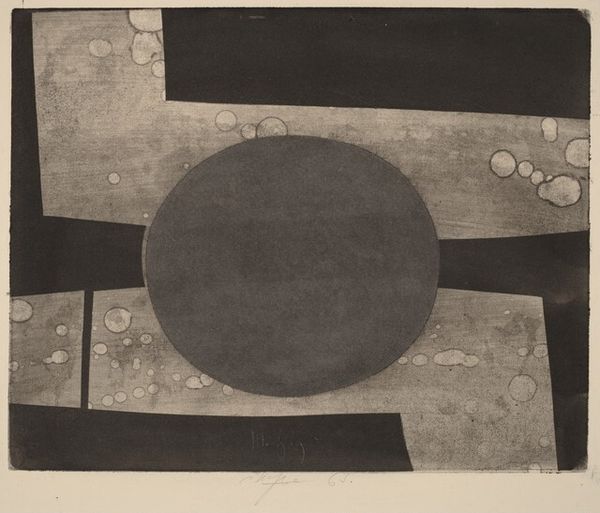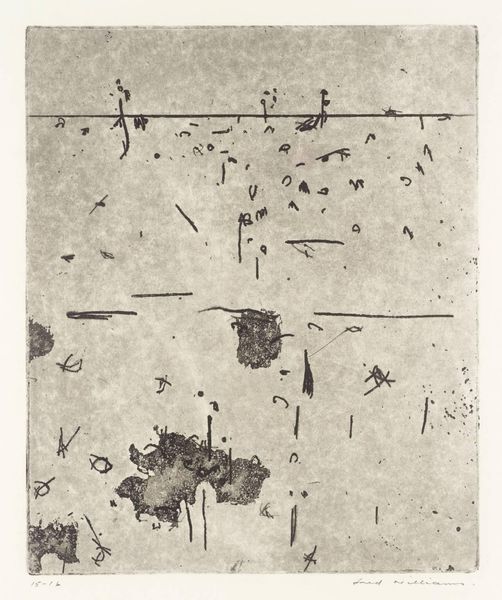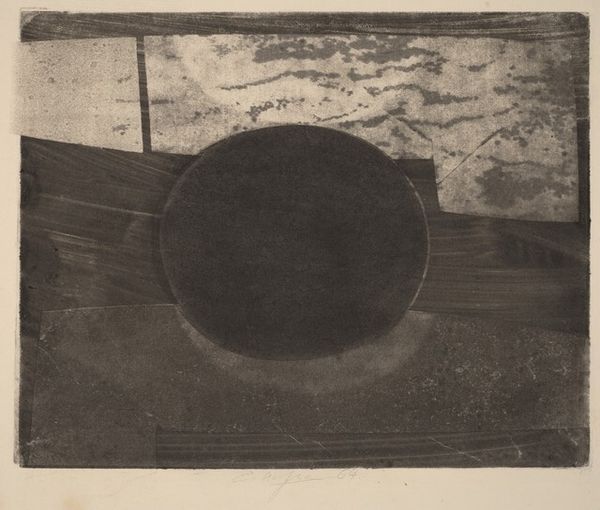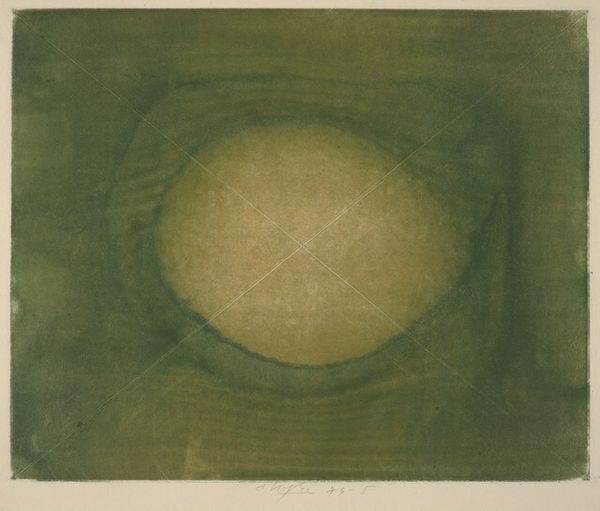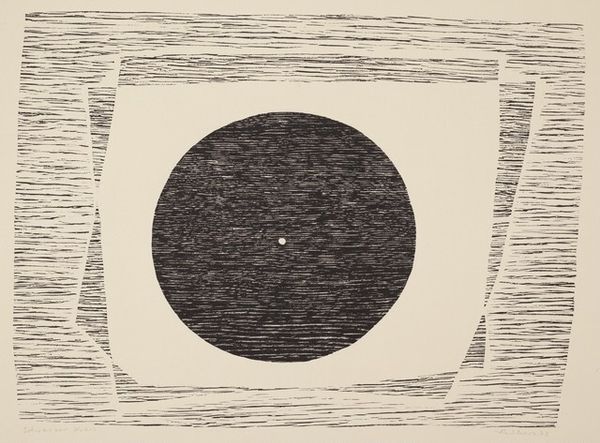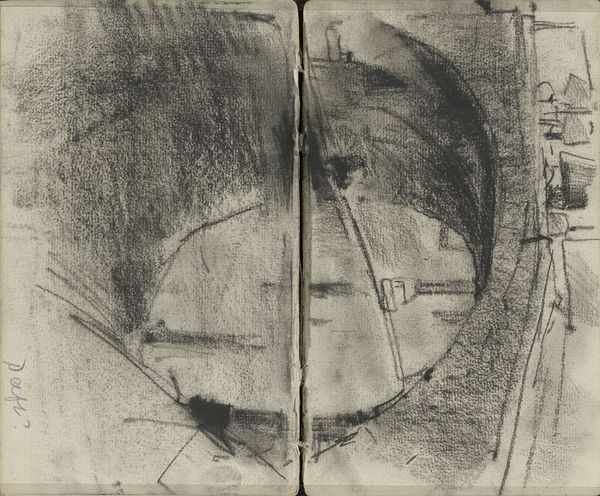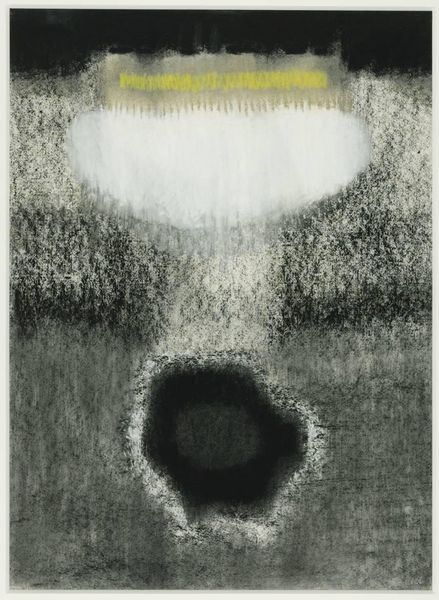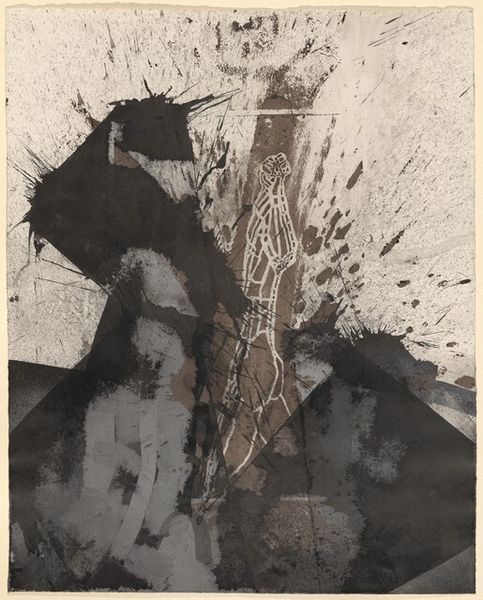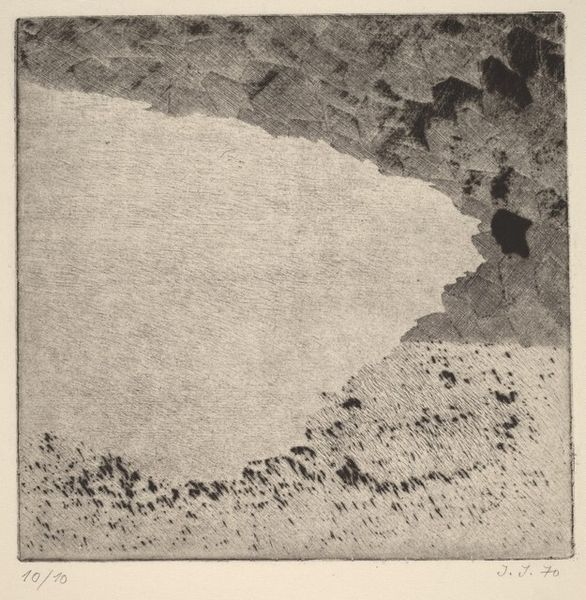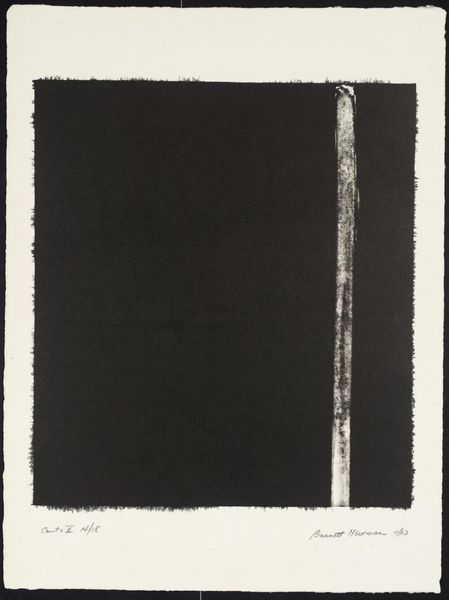
print, etching, paper, ink
#
ink paper printed
# print
#
etching
#
paper
#
ink
#
geometric
#
abstraction
#
monochrome
Copyright: National Gallery of Art: CC0 1.0
Curator: Sid Hammer's "Dies Irae," created in 1961, presents a stark abstract vision in ink on paper. Editor: My initial feeling is one of foreboding. That dark central circle really draws the eye, like a void staring back. The texture also hints at something tumultuous, something being pulled apart. Curator: The title "Dies Irae" translates to "Day of Wrath," originating from a 13th-century Latin hymn about the Last Judgment. Hammer uses that powerful association to invoke themes of destruction and reckoning. Look at the deliberate use of geometric forms and the sharp monochrome contrast, it really underlines the concept of absolute judgement. Editor: Absolutely. Thinking about the 'ink on paper' aspect – it seems intentionally raw. The artist isn't hiding the process, in fact he makes the imperfect textures a core element of the design itself. Etching into a plate and pressing creates its own marks of process in the printmaking technique. Is this artwork related to particular historic circumstances, maybe post-war Europe? Curator: It's definitely a potent image reflecting post-war anxieties. The circular void, for instance, could be interpreted as a visual metaphor for loss or a society in recovery after the war. You know how visual elements carry symbolic implications from historical happenings and cultural trauma. Editor: What about the 'limited' aspect implied in this being one of several prints. Printmaking democratizes artwork, makes it reproducible and accessible, it gets the message 'out there', right? Curator: It absolutely does make artworks like these much more accessible, but let's also consider how prints become highly individualized art objects: they contain nuances in texture. It's these very properties and characteristics that hold specific meaning about production practices. Editor: I see what you mean, a sense of craft co-existing with broader societal messages. Curator: Indeed. Hammer prompts us to contemplate profound issues about a very somber topic by reminding us about memory and consequences in the wake of catastrophic occurrences. Editor: And by directing attention to the ‘hands on’ procedure used to prepare the actual medium as such. Intriguing.
Comments
No comments
Be the first to comment and join the conversation on the ultimate creative platform.
